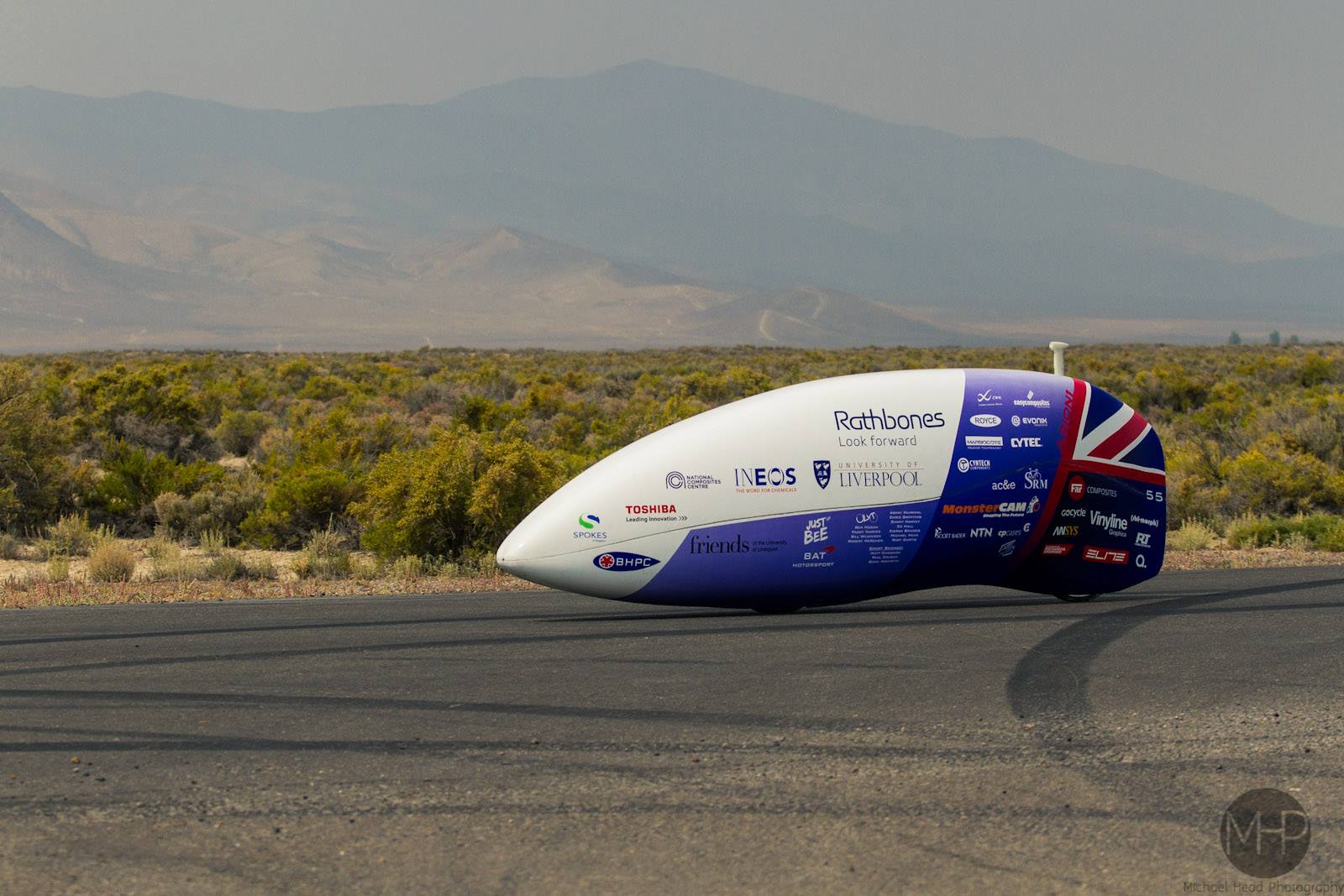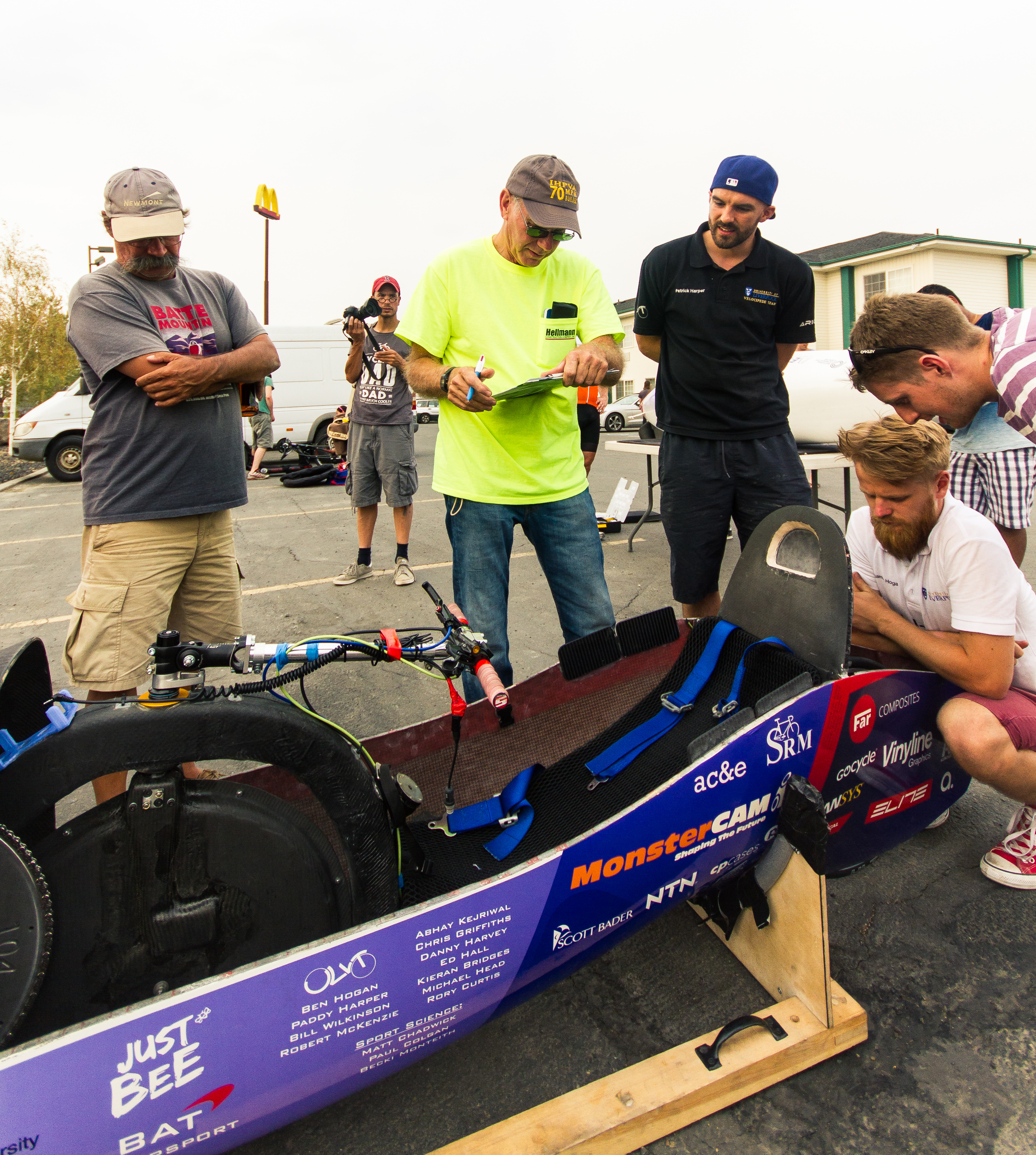
The ARION1 land speed bicycle, made of high performance lightweight composite materials and technologies and compatible resin, has recently competed in the IHPVA World Human Power Speed Challenge, which took place from the 14-19 September 2015.
During the race, its rider, Ken Buckley set a new human powered British land speed UK record of 75.03 mph piloting ARION1.
According to its creators, the University of Liverpool velocipede (ULV) team, the ARION1 was designed to maximise the aerodynamic performance and minimise the overall weight of the vehicle. Structurally, it needs to handle the high force through the pedals driving the front wheel, support a single rider in a recumbent position and be stable in a straight line at speeds of over 80 mph. Its overall dimensions are approximately 2.8 metres long by 0.85 metres high and 0.5 metre wide. The rider of the ARION1 velocipede sits almost flat with legs forward, completely enclosed inside a two part carbon fiber composite body shell, while the top half is removable to enable rider access.
Key sponsors
The ULV team used Scott Bader’s carbon fiber compatible Crestapol 1250LV acrylic laminating resin for the outer shell and the carbon fiber composite (CFRP) chassis frame, and Crestabond M1-20 primer-less structural adhesive to bond a variety of CFRP and metal parts used internally. The carbon fiber reinforcements, foam core materials and related design and processing technical support were provided by key sponsors of the student project including Far-UK, Evonik, the UK National Composites Centre (NCC), as well as Scott Bader.
The use of carbon fiber with Crestapol high performance resin inside and out of the ARION1 was extensive to achieve the strength to weight ratio needed for this type of speed challenge vehicle. The aerodynamic, rigid, thin walled, outer body shell is a sandwich laminate construction, moulded using carbon fiber fabric, Crestapol 1250LV infusion resin and cut-to-size sections of ROHACELL IG rigid closed-cell PMI foam core. The entire internal frame and where possible other components, such as the seat, the front end section and push rods, were also CFRP fabricated parts.
For the h-shaped high load bearing frame section that fits around the front wheel supporting the wheel strut, drive chain system and pedals, Far-UK recommended an infused part design using its AxontexTM carbon fiber (CF) braid and foam core system with Crestapol 1250 LV resin. The lightweight, high modulus, infused sandwich laminate specification was chosen by the ULV Team in preference to an epoxy prepreg based option that had also been tested, while the Axontex CF braid system provided the flexibility needed to wrap around the curved sections and to conform around machined sections of ROHACELL IG foam core.

Critical factor
The dry lay-up and vacuum infusion at room temperature of the h-section was completed in just a few hours. The use of Crestapol 1250 LV enabled low temperature, rapid cure infusion of the part without any mould expansion. This was a critical factor for the team as the mould was also used as a jig to machine holes in the frame components, so maintaining mould dimensional accuracy was critical.
To minimise weight, Crestabond M1-20 was used throughout the interior of ARION1 to structurally bond CFRP, metal and wood parts, as well as a number of Big Head metal fasteners and fixings of the team’s own design. This included CF-CF bonding of the front end section and the lay shaft mounts into the outer body shell, as well as bonding the anodised aluminium head tube and crankset mounts to the carbon fiber front end member.
This story is reprinted from material from Scott Bader, with editorial changes made by Materials Today. The views expressed in this article do not necessarily represent those of Elsevier.
